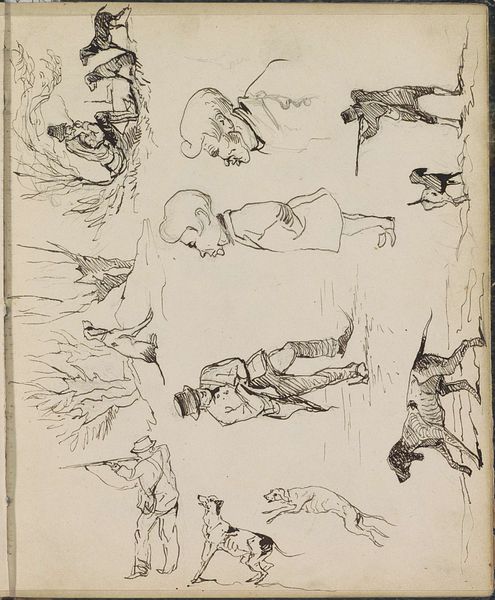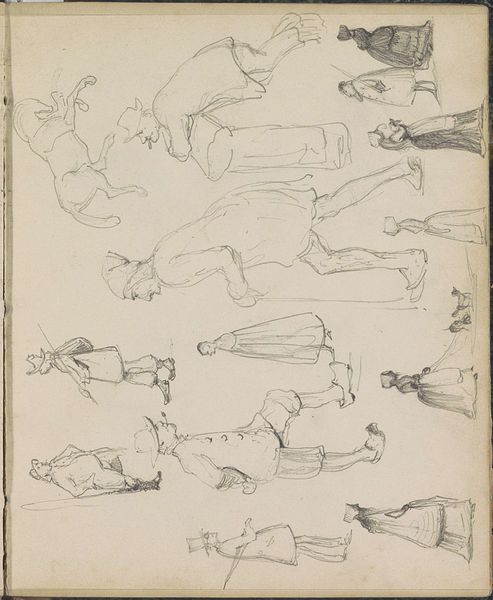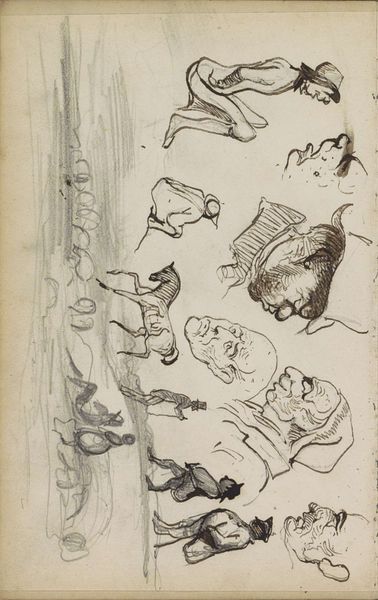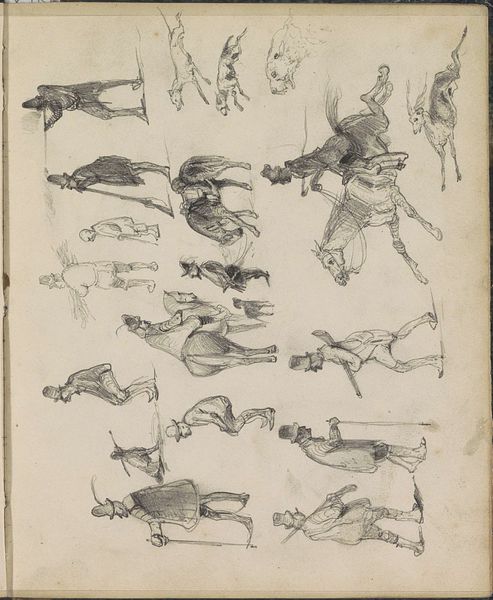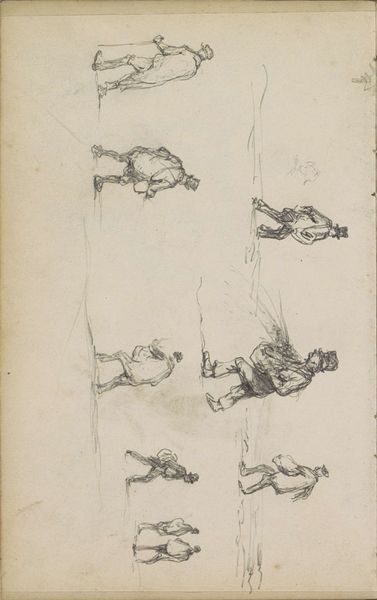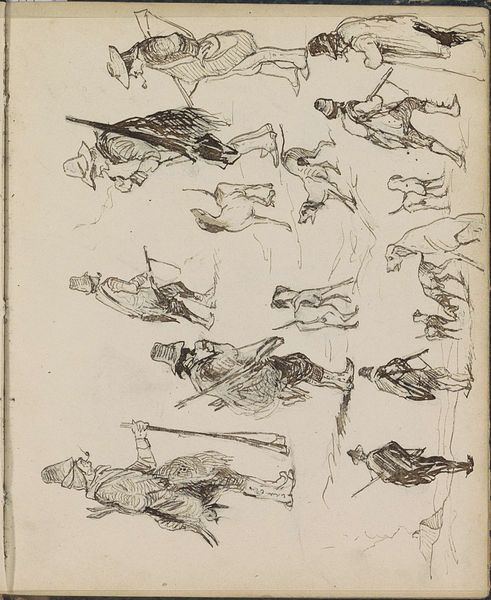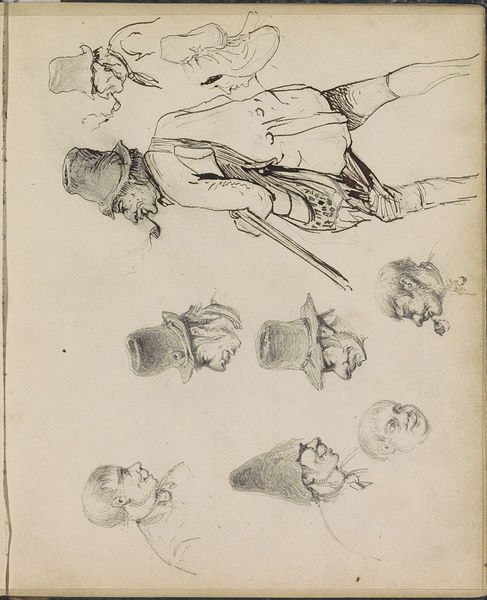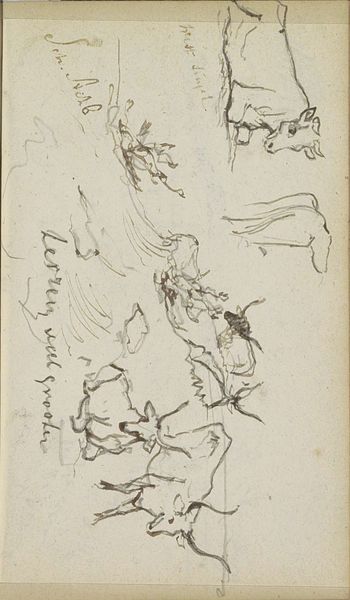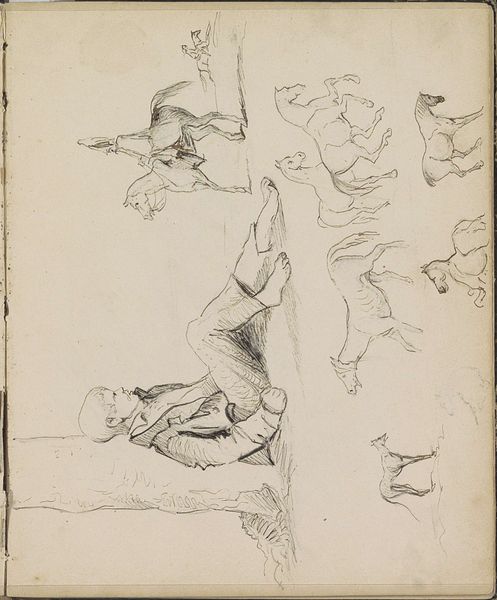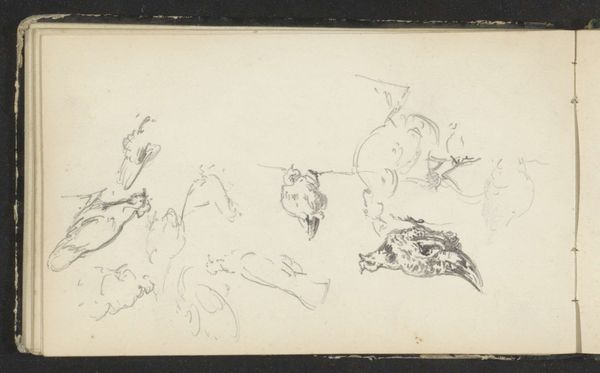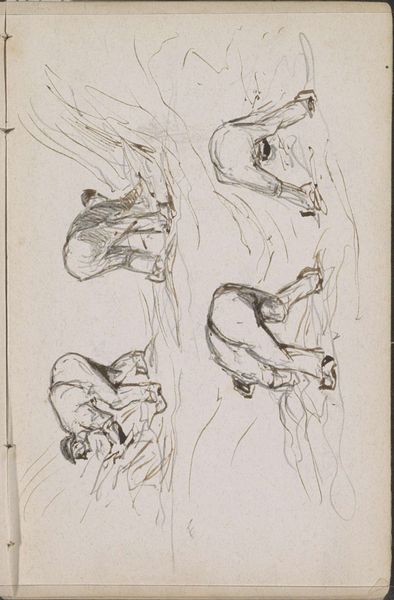
Studieblad, onder andere met ruiters en mannenkoppen 1841 - 1853
0:00
0:00
johannestavenraat
Rijksmuseum
drawing, paper, pencil
#
portrait
#
drawing
#
ink drawing
#
figuration
#
paper
#
pencil
#
horse
#
academic-art
Copyright: Rijks Museum: Open Domain
Editor: This is "Studieblad, onder andere met ruiters en mannenkoppen," a study sheet by Johannes Tavenraat, created between 1841 and 1853 using pencil and ink on paper. The figures, especially the horses and men’s heads, have a lively, almost frantic energy. What strikes you about this piece? Curator: The loose, almost scribbled quality belies its academic function. In the 19th century, these kinds of study sheets were crucial to artistic training. We often view these as preparatory, but I wonder what purpose did it have beyond preparing him for a more polished piece? Editor: I suppose it could also be a space for pure experimentation, free from the pressures of a finished work? Curator: Exactly! And where might this sheet fit within the larger artistic ecosystem? Consider how academic art functioned at that time. It was a period of established salons and rigid artistic hierarchies, wouldn't you agree? Editor: I would! It seems like this would allow an artist freedom that other mediums at the time perhaps would not? Curator: Precisely! Think of the relationship between the private study and the public artwork. Did Tavenraat create more conventional academic paintings, for instance? What was their reception? His artistic choices would be governed by institutional forces and, arguably, by patrons. Editor: That’s fascinating – it gives me a completely different perspective on something that seemed initially just like sketches. Curator: And it shows us how an artist’s choices are interwoven with the cultural and institutional contexts of their time. Always question the apparent intention of art.
Comments
No comments
Be the first to comment and join the conversation on the ultimate creative platform.
